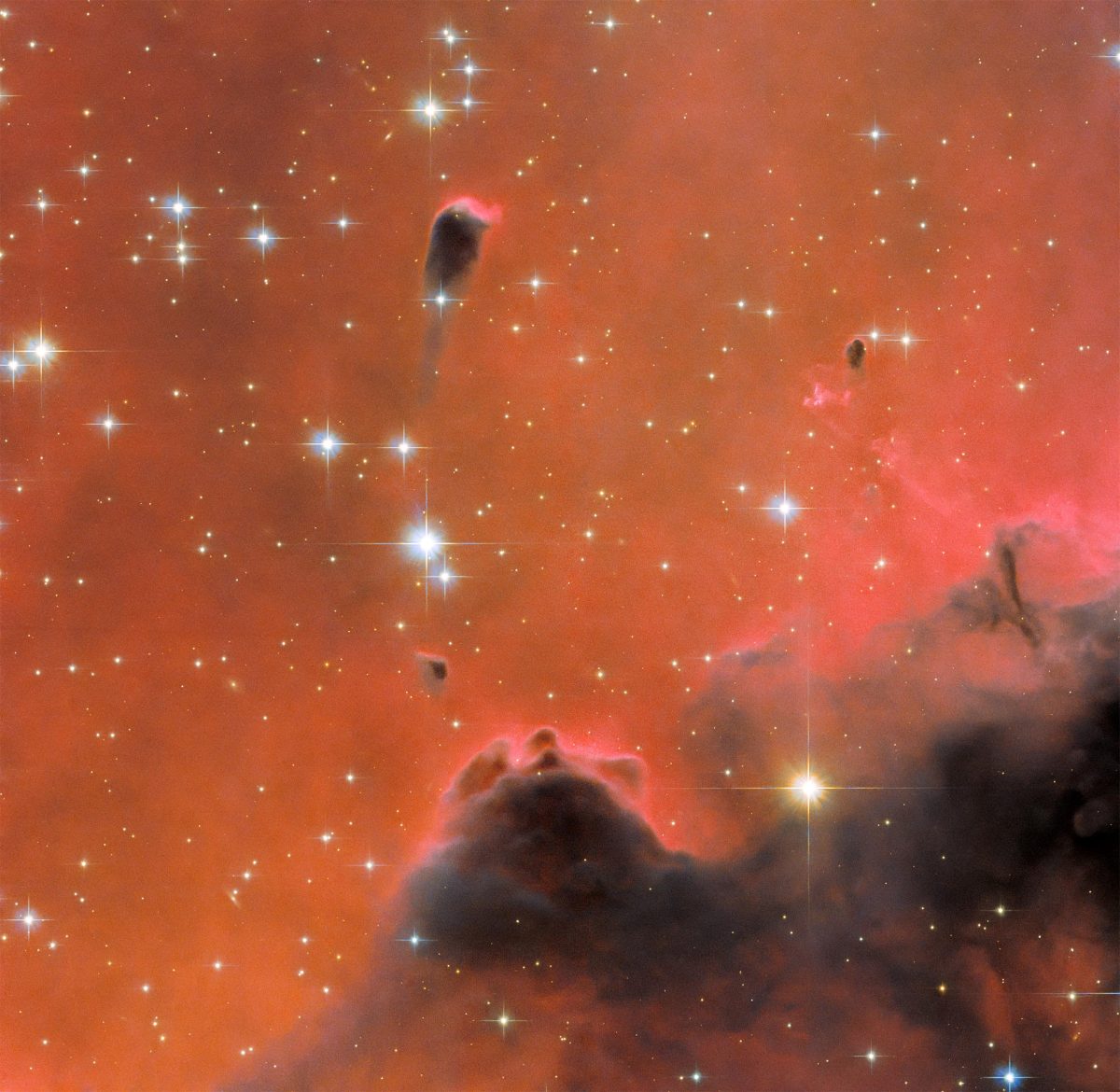Festive Hubble Space Telescope image showing a small region of the well-known nebula Westerhout 5, which lies around 7,000 light years away. Credit:
ESA/Hubble & NASA, R. Sahai
Just in time for Christmas, this new Picture of the Week from the Hubble Space Telescope features a glistening scene in holiday red. This festive image shows a small region of the well-known nebula Westerhout 5, which is located approximately 7,000 light-years from Earth. Suffused with bright red light, this luminous image hosts a variety of interesting features, including a free-floating Evaporating Gaseous Globule (frEGG). The frEGG in this image is the small tadpole-shaped dark region in the upper center-left. This buoyant-looking bubble is lumbered with two rather uninspiring names — [KAG2008] globule 13 and J025838.6+604259.
FrEGGs are a particular class of Evaporating Gaseous Globules (EGGs). Both frEGGs and EGGs are regions of gas that are sufficiently dense that they photoevaporate less easily than the less compact gas surrounding them. Photoevaporation occurs when gas is ionized and dispersed away by an intense source of radiation — typically young, hot stars releasing vast amounts of ultraviolet light. EGGs were only identified fairly recently, most notably at the tips of the Pillars of Creation (see image below), which were captured by Hubble in iconic images released in 1995.

These columns that resemble stalagmites protruding from the floor of a cavern are in fact cool interstellar hydrogen gas and dust that act as incubators for new stars. Inside them and on their surface astronomers have found knots or globules of denser gas. These are called EGGs (acronym for “Evaporating Gaseous Globules”). Inside at least some of the EGGs stars are being formed. Credit NASA, ESA, STScI, J. Hester and P. Scowen (ASU)
FrEGGs were classified even more recently, and are distinguished from EGGs by being detached and having a distinct ‘head-tail’ shape. FrEGGs and EGGs are of particular interest because their density makes it more difficult for intense UV radiation, found in regions rich in young stars, to penetrate them. Their relative opacity means that the gas within them is protected from ionization and photoevaporation. This is thought to be important for the formation of protostars, and it is predicted that many FrEGGs and EGGs will play host to the birth of new stars.
The frEGG in this image (at the top of the page) is a dark spot in the sea of red light. The red color is caused by a particular type of light emission known as H-alpha emission. This happens when an extremely energetic electron within a hydrogen atom loses a specific amount of energy, leading to the electron becoming less energetic and releasing this recognizable red light.
Share your story or advertise with us: Whatsapp: +2347068606071 Email: info@newspotng.com












